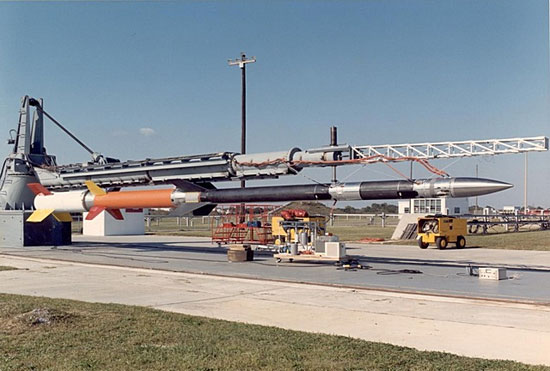NASA successfully launched the space celestial probe
On June 5, the US Space Agency (NASA) successfully launched a missile carrying a celestial observatory probe named CIBER with the aim of studying the formation of the first galaxy.

NASA said the Black Brant XII rocket was launched at 3:05 GMT from NASA's Wallops Flight Facility launcher in Virginia, USA.
With CIBER, scientists will study the time when the first stars and galaxies formed in the universe and the brightness when they burned the core fuel.
This is CIBER's fourth flight on a NASA rocket. The previous flights were respectively in 2009, 2010 and 2012 from White Sands launchers in New Mexico, USA. However, this time, the CIBER was launched with a larger and stronger missile than the previous time, bringing the ship to higher altitudes so that it would have a longer observation time.
The upper launch of CIBER, which was scheduled to take place on the evening of May 4, was rescheduled due to the lack of cooling time in the head device to the required temperature.
- Successfully launch the Pluto probe
- NASA successfully launched the spacecraft to approach the Sun.
- NASA launched the Mars probe
- NASA launches the first Pluto probe
- Lucy is about to explore the Solar System
- Japan launched the first moon probe
- China launched the moon probe satellite
- China successfully launched Thien Cung 2 space station
- NASA launched a spacecraft to explore the boundary area of the solar system
- NASA revealed the mission of the next Mars probe
- NASA is about to launch the Dawn probe
- NASA launched two satellites to probe the radiation belt
 Van Allen's belt and evidence that the Apollo 11 mission to the Moon was myth
Van Allen's belt and evidence that the Apollo 11 mission to the Moon was myth The levels of civilization in the universe (Kardashev scale)
The levels of civilization in the universe (Kardashev scale) Today Mars, the sun and the Earth are aligned
Today Mars, the sun and the Earth are aligned The Amazon owner announced a secret plan to build a space base for thousands of people
The Amazon owner announced a secret plan to build a space base for thousands of people